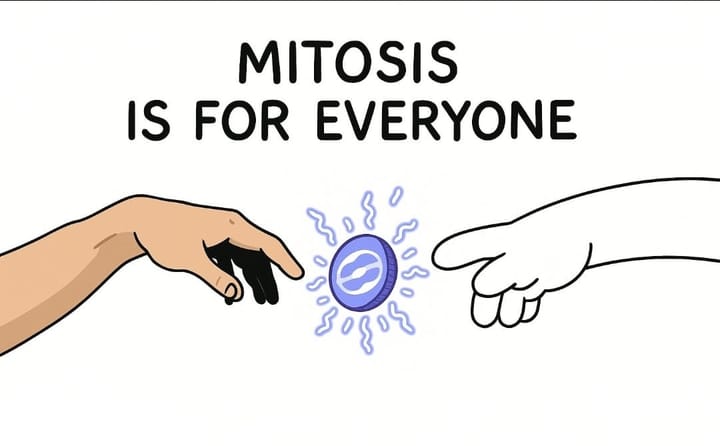Humanity Protocol: Biometric Sybil Resistance for Decentralized Identity

Humanity Protocol is a decentralized identity system that leverages palm biometrics for Sybil resistance, enabling a fair and inclusive digital world. Built on zkEVM and integrated with zero-knowledge proofs, it empowers individuals to control their identity without compromising privacy. This article explores how Humanity Protocol works, its technical stack, and its implications for Web3.
What is Humanity Protocol?Humanity Protocol is a decentralized identity protocol designed to verify personhood using palm recognition as a proof-of-humanity mechanism. Unlike traditional identity systems that rely on centralized authorities or data-heavy KYC processes, Humanity Protocol uses biometric verification combined with zero-knowledge proofs (ZKPs) to establish unique digital identities while preserving user privacy.
The protocol aims to solve the Sybil attack problem that plagues decentralized networks, especially in governance, airdrop distribution, and quadratic funding systems. By ensuring each user is a unique human, it enables truly democratic participation in Web3 ecosystems.
How Does Humanity Protocol Work?
At its core, Humanity Protocol follows this sequence:
- Palm Recognition Enrollment:Users scan their palm through a mobile device. The system does not store the actual image but converts it into a unique biometric signature.
- Zero-Knowledge Proof Generation:The palm signature is then processed to generate a ZK proof that asserts a user is unique and human without revealing the underlying biometric data.
- ZK-based Identity Commitment:The zero-knowledge proof is submitted to a zkEVM-based Layer 2, where it’s validated and recorded as a non-reversible identity commitment.
- On-chain Access & Integration:DApps can query Humanity Protocol’s identity registry to ensure that each user interacting with their platform has a verified, unique identity.
The protocol is built using a zkEVM architecture, ensuring Ethereum compatibility and scalability. It can interact with protocols such as Mitosis Bridge for cross-chain identity applications, ensuring composability within the broader Web3 ecosystem.
Why Palm Biometrics?
While most biometric systems (e.g., facial recognition or iris scans) raise strong privacy and surveillance concerns, palm biometrics offer several advantages:
- Privacy-first: Palm scans are harder to collect without consent compared to facial images.
- Low friction: Scanning your palm via a smartphone is intuitive and quick.
- Non-invasive: Unlike iris scans or fingerprint readers, no specialized hardware is needed.
By combining palm biometrics with ZKPs, Humanity Protocol ensures that user data is never stored or shared only mathematical proofs of uniqueness are used.
Key Technical Components
1. zkEVM Layer 2:
Humanity Protocol is deployed on a zkEVM, allowing it to execute EVM-compatible smart contracts with built-in privacy and scalability. This aligns with the current trend of using modular rollups to separate execution and settlement layers, as seen in projects like Caldera.
2. Biometric Hashing & ZK Circuits:
Palm data is hashed and fed into ZK circuits that prove the uniqueness of the hash without revealing the original biometric input.
3. On-chain Identity Registry:
Each unique proof is linked to an identity commitment stored on-chain. Users can reuse this identity across DApps, DAOs, and even for on-chain voting systems such as Snapshot.
Use Cases & Ecosystem Impact
- Sybil-resistant airdrops: Prevents bots from farming incentives, enabling fair distribution of tokens.
- Decentralized governance: Ensures that each vote represents a unique individual, not a whale controlling multiple wallets.
- Web3 social media: Verifiable human identities can reduce spam and abuse on decentralized platforms.
- Reputation systems: Builds a foundation for on-chain reputation and credentialing without exposing private data.
By addressing the identity challenge, Humanity Protocol complements systems like Mitosis Appchains, which require trusted but decentralized user verification for scalable and secure application layers.
Challenges & Considerations
Despite its potential, Humanity Protocol faces several hurdles:
- Adoption curve: Biometric identity is still controversial in some regions due to surveillance concerns.
- Data custody: Even though the protocol doesn’t store biometric data, user education is key to ensuring trust.
- Interoperability: Ensuring smooth integration with existing DApps and rollups will be critical to its success.
Conclusion
Humanity Protocol represents a significant leap toward a Sybil-resistant, privacy respecting digital identity layer. By combining palm biometrics with zkEVM infrastructure and zero-knowledge proofs, it lays the foundation for a more equitable Web3.
As protocols like Mitosis continue to explore cross-chain composability and decentralized coordination, Humanity Protocol could play a pivotal role in identity verification and trustless human authentication across ecosystems.
Imternal Links:



Comments ()